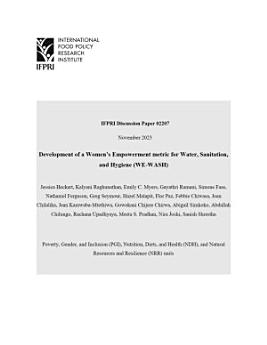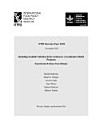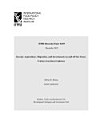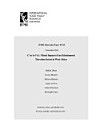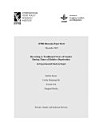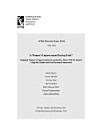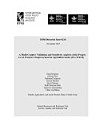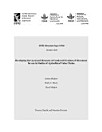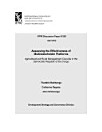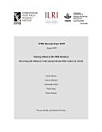Development of a Women’s Empowerment metric for Water, Sanitation, and Hygiene (WE-WASH)
Heckert, Jessica · Raghunathan, Kalyani · Myers, Emily · Ramani, Gayathri V. · Faas, Simone · Ferguson, Nathaniel · Seymour, Greg · Malapit, Hazel J. · Paz, Flor · Chiwasa, Febbie · Chilalika, Joan · Kamwaba-Mtethiwa, Jean · Chirwa, Gowokani Chijere · Simkoko, Abigail · Chilungo, Abdallah · Upadhyaya, Rachana · Pradhan, Meeta S. · Joshi, Nira · Shrestha, Sanish
Dec 2023 · IFPRI Discussion Papers Book 2207 · Intl Food Policy Res Inst
Ebook
97
Pages
family_home
Eligible
info
reportRatings and reviews aren’t verified Learn More
About this ebook
There is a growing focus on gender-sensitive approaches and women’s empowerment in the water, sanitation, and hygiene sectors. At the same time, there is a lack of metrics to measure women’s empowerment in the WASH sector. Such metrics are important for understanding the types of programmatic interventions that are most needed for addressing women’s empowerment, as well as for assessing their impacts on women’s empowerment. In this report, we describe the development of a Women’s Empowerment metrics for Water, Sanitation, and Hygiene (WE-WASH). We collected data from individual women and men in 812 households in Malawi and 826 households in Nepal. Using the data, we develop 14 indicators and establish cutoff thresholds (i.e., whether the individual is empowered) in the areas of intrinsic, instrumental, and collective agency in WASH; instrumental and intrinsic agency in menstrual hygiene management; and the empowerment environment (or resources for empowerment). In each country, we observe differences in empowerment levels between women and men, that favor men on most outcomes. Notably, in both countries, we find that women are much less likely than men to contribute to WASH infrastructure decisions, and most women are spending an undue amount of time contributing to WASH-related labor. In Nepal especially, agency related to menstrual hygiene management is also a substantial area of disempowerment for women.
Rate this ebook
Tell us what you think.
Reading information
Smartphones and tablets
Install the Google Play Books app for Android and iPad/iPhone. It syncs automatically with your account and allows you to read online or offline wherever you are.
Laptops and computers
You can listen to audiobooks purchased on Google Play using your computer's web browser.
eReaders and other devices
To read on e-ink devices like Kobo eReaders, you'll need to download a file and transfer it to your device. Follow the detailed Help Center instructions to transfer the files to supported eReaders.
